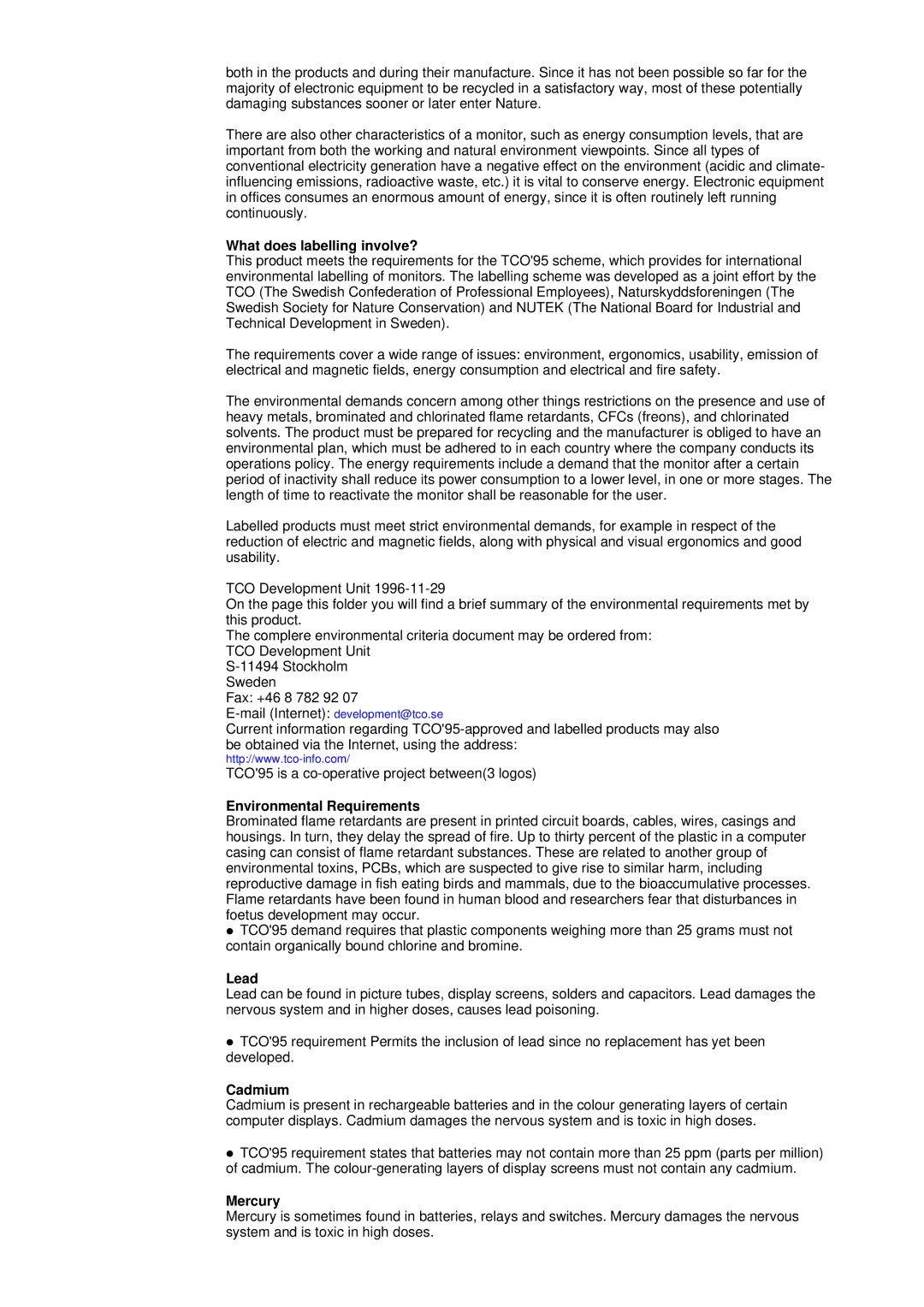957D specifications
The Samsung 957D is a state-of-the-art display technology representative of Samsung's commitment to innovation in visual experiences. Designed for both professional and casual applications, the 957D showcases an array of features that elevate user experience, offering stunning visuals and remarkable versatility.One of the standout features of the Samsung 957D is its Ultra HD resolution, delivering a crisp and clear image quality that enhances every detail. With a resolution of 3840 x 2160 pixels, this model ensures an immersive viewing experience, making it ideal for graphic designers, video editors, and gamers alike. The high pixel density provides sharp text and graphics, making it an excellent choice for tasks requiring precision.
The Samsung 957D incorporates advanced display technologies, including Quantum Dot technology, which enhances color accuracy and boosts brightness levels. This allows users to experience a broader color spectrum, resulting in vibrant and true-to-life images. Along with HDR (High Dynamic Range) support, the display can present deeper blacks and brighter whites, creating a more dynamic range of colors that enhances the overall viewing experience.
Another significant characteristic of the Samsung 957D is its sleek and modern design. The slim bezels simplify multi-display setups, allowing for an unobtrusive and seamless viewing experience. Additionally, the adjustable stand provides users with ergonomic flexibility, enabling height and tilt adjustments for maximum comfort during extended viewing periods.
Connectivity options are also robust in the Samsung 957D. With multiple HDMI ports, DisplayPort, and USB-C connections, users can easily connect a variety of devices, from computers to gaming consoles, ensuring compatibility with modern technology. Built-in speakers further add to the convenience, eliminating the need for additional audio equipment for casual use.
Furthermore, the Samsung 957D prioritizes energy efficiency. Compliant with energy-saving certifications, this monitor is designed to consume less power while delivering exceptional performance. This makes it not only an environmentally friendly choice but also a cost-effective one for users looking to minimize electricity usage.
In summary, the Samsung 957D stands as a remarkable display solution packed with features that cater to a broad range of users. With its Ultra HD resolution, Quantum Dot technology, ergonomic design, extensive connectivity options, and energy efficiency, it is a powerful tool for anyone seeking a top-tier visual experience. Whether for professional or recreational purposes, the Samsung 957D ensures that users enjoy a superior viewing experience every time.
